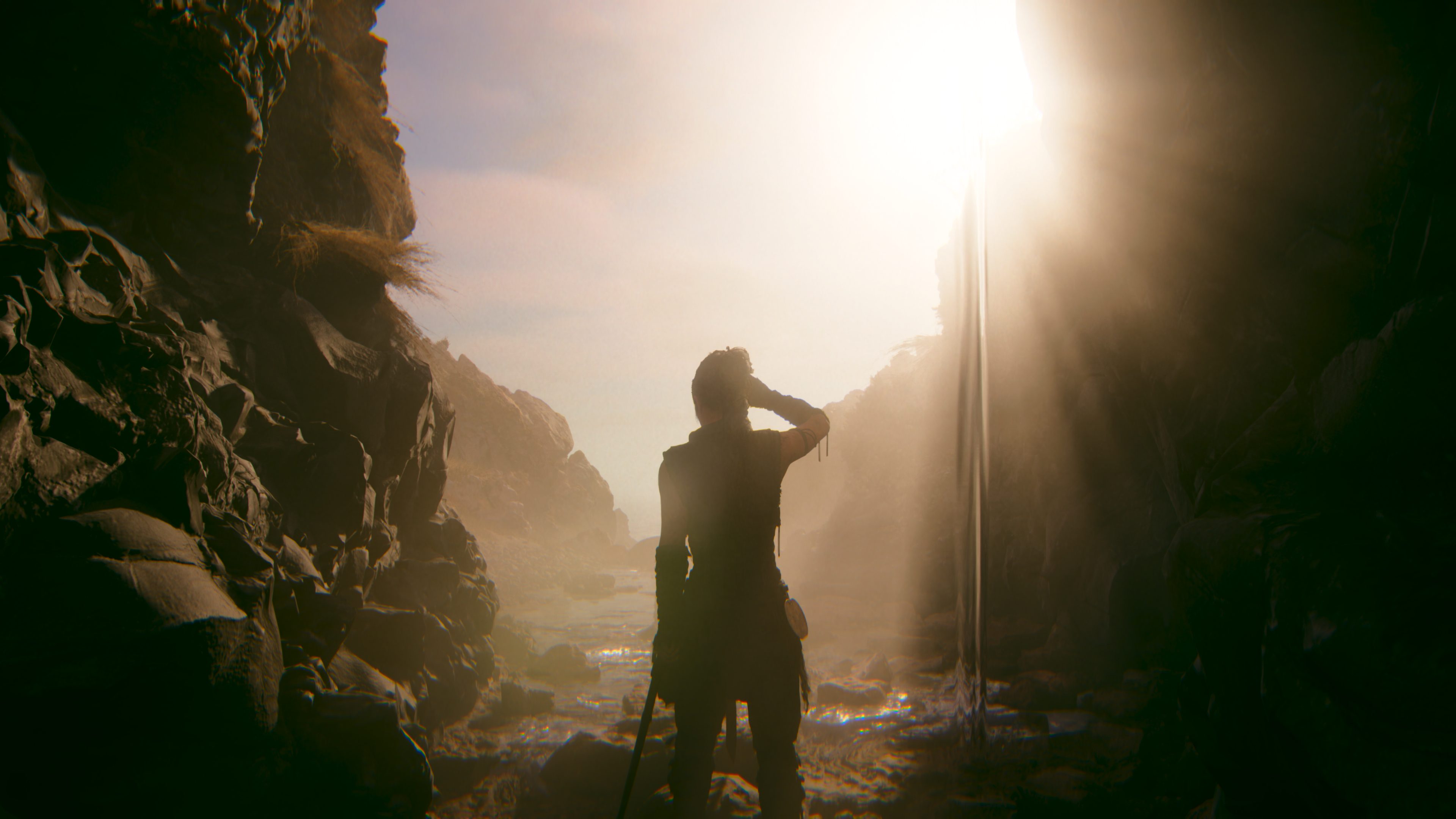Can I play Senua's Saga: Hellblade II on gaming handhelds like the ASUS ROG Ally?
Hellblade 2 is a graphically demanding game, so can handhelds handle it?

Can I play Senua's Saga: Hellblade II on gaming handhelds?
Yes, but it really depends on the handheld and your settings. The ASUS ROG Ally with the AMD Z1 Extreme can run Hellblade 2 on the lowest settings, but it's only enjoyable with the 25W Turbo mode. You'll have to make sacrifices to get the game to run, but it's possible to have a good playing experience on gaming handhelds.
The day is finally here. Senua's Saga: Hellblade II is now available on Xbox Series X|S and Windows PC, continuing the story that first began nearly seven years ago. The second chapter of Senua's tale builds on everything the first game created, but ups the ante in every possible way — especially visuals. Hellblade 2 is one of the most technically and graphically impressive games released this generation, which begs the question: can it run on gaming handhelds?
Gaming handhelds like the Steam Deck, ASUS ROG Ally, and Lenovo Legion Go are all very capable devices for playing a vast assortment of modern PC games, but they do obviously have power limitations. Senua's Saga: Hellblade II requires a pretty powerful gaming PC to run, so I downloaded the game on my ASUS ROG Ally to see if I could play the game and have a good time while doing so. Here's what I found.
- Check out our in-depth Senua's Saga: Hellblade II review
Possible, but you'll have to work for it
I installed Senua's Saga: Hellblade II on my ASUS ROG Ally via the Microsoft Store, and it was around 49GB in size. After I installed it and opened the game for the first time, it took 5-10 minutes for it to compile the shaders for the very first time. After that, the game loaded to the main menu without any complications, allowing me to begin experimenting with different options and settings. I eventually was able to play Hellblade 2 at a stable 30 frames-per-second (FPS), but I had to work a little to get there.
First, be sure to check out my guide on seven ways to improve the ASUS ROG Ally, as it details how to allocate more RAM for gaming. The ROG Ally boasts 16GB of RAM, and by default 4GB is allocated to gaming and the remaining 12GB is system memory (for multitasking and keeping games and apps open). Many of the best PC games released in recent years won't run well with less than 6GB of VRAM, and Senua's Saga: Hellblade II is no exception. Be sure to change that setting before continuing.
Elsewhere, I kept all the AMD-specific gaming features that are enabled by default, such as Radeon Super Resolution, Radeon Anti-Lag, and Radeon Boost. Back to Hellblade 2, I kept the game at FHD (1080p) and set it to the lowest graphics preset (it's helpfully called "Low"). I then enabled AMD's FidelityFX Super Resolution 3 and set it to "Balanced," which massively improves performance by running the game at a lower native resolution and then upscaling it to the target resolution.
Even then, though, the game struggled to run past 20 FPS when I used the ROG Ally unplugged and in its 15W Performance mode. I saw huge increases in performance and stability when I ran the ROG Ally in the 25W Turbo mode, which I typically only do when the handheld is plugged in because of how severely it drains the battery. In that mode, though, I was able to achieve a stable and consistent 30 FPS, and it was more than smooth enough for me to enjoy my time with the game.
The lowered graphics settings obviously affect how good the game looks, but I was still impressed by the visual fidelity overall, and the downgrades were less noticeable on the ROG Ally's smaller screen. Overall, I'd be more than happy playing Senua's Saga: Hellblade II on the ASUS ROG Ally. This was without using AMD Fluid Motion Frames on the ASUS ROG Ally, too, which could further improve framerates if you configure everything properly (I wasn't able to test this, as it seems AMD's software couldn't recognize Hellblade 2 as a game before it released).
All the latest news, reviews, and guides for Windows and Xbox diehards.
Of course, your experience with the other best gaming handhelds may differ, as my ROG Ally is powered by the AMD Z1 Extreme, one of the most powerful gaming handheld platforms. The base model ASUS ROG Ally may struggle more, for example. The Steam Deck is also a wild card, given that it runs Linux and (as of now) Hellblade 2 is not Steam Deck verified. I'm confident Valve's handheld could handle the game, too; at the very least, I'm more optimistic than I was when I first began playing Senua's Saga: Hellblade II.
Senua's Saga: Hellblade II is now available to play on Xbox Series X|S and Windows PC, and is also available through Xbox Game Pass and Xbox Cloud Gaming. You can buy Hellblade 2 for $49.99 at Amazon.

Zachary Boddy (They / Them) is a Staff Writer for Windows Central, primarily focused on covering the latest news in tech and gaming, the best Xbox and PC games, and the most interesting Windows and Xbox hardware. They have been gaming and writing for most of their life starting with the original Xbox, and started out as a freelancer for Windows Central and its sister sites in 2019. Now a full-fledged Staff Writer, Zachary has expanded from only writing about all things Minecraft to covering practically everything on which Windows Central is an expert, especially when it comes to Microsoft.


